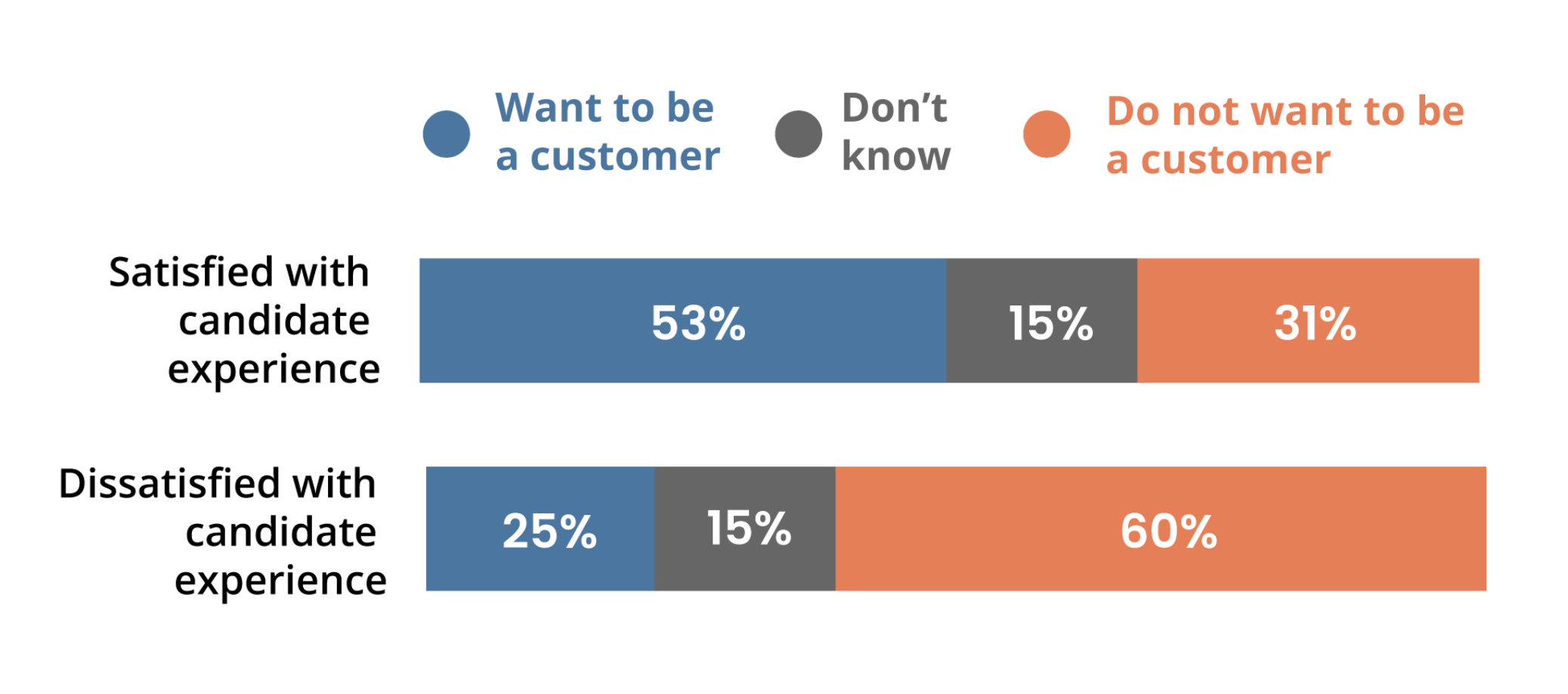
Curious about how direct sourcing could reduce your spend? You’re not alone. With large U.S. organization’s now spending up to 30% of their overall procurement spend on contingent workers, there are currently 87 million Google results on this very topic.
Accelerated by the pandemic, the global paradigm shift in the world of work has swiftly focused the war for talent on contingent workers. Today, more than 40% of the workforce is considered contingent. Moreover, a further 80% of large U.S. organizations intend to grow their flexible workforce in the coming years. While rebounding from recession, workforce leaders are now tasked with doing more on much tighter shoestrings. Programs that enable cost-effective contingent recruiting are worth their weight in gold.
Not surprisingly, 60% of organizations surveyed by Staffing Industry Analysts, are aiming to prioritize direct sourcing in the next couple of years in response to their rising contingent workforce demands. In fact, some of the world’s most successful Fortune 500 companies from Meta, to BP and PWC, are now employing direct sourcing solutions to find contingent talent. So, what is all the hype about? Can direct sourcing truly reduce your program spend? We’ll get to that in a moment but first, let’s get consensus on what we mean when referring to direct sourcing.
What does Direct Sourcing involve?
Direct Sourcing describes the process where a company leverages its employer brand and market leading technology to attract and engage a pipeline of qualified contractors. This typically results in substantial cost savings, an improved candidate experience and better quality talent but we’ll get to that soon. This process can be done in-house or with the help of third-party staffing suppliers (Managed Direct Sourcing [MDS]) to grow, curate and engage your branded talent pools as a managed service.
MDS fills your contingent job requisitions with on-demand, fit for role candidates offering the benefits of traditional Direct Sourcing strategies, but using external sources and curators to manage your branded talent cloud for your contingent workers. Talent is directly sourced and the employer brand is leveraged to attract the best talent using a candidate-centric experience.
A snapshot of the structure of an MDS model
Now to refocus on our cost reduction question. In answering this question we will examine the following 6 evidence based ways direct sourcing can significantly reduce your program spend:
- Brand attraction does the heavy lifting
- Reduces time to hire
- Candidate centric features drive satisfaction
- Improves hiring quality
- Hire on-demand
- Increased DEI
1. Brand attraction does the heavy lifting in your Direct Sourcing Strategy
By curating and growing engaged talent pools, you are essentially leveraging your brand to do your heavy lifting. It makes sense that a deeper reliance on brand enables organizations to lower their recruitment costs. Specifically, research by LiveHire has demonstrated that reducing third-party agency costs can lead to a decrease in an organization’s costs during the contingent workforce hiring and management process by as much as 40%. How so? Reducing recruitment suppliers results in significantly lower administrative costs. In turn, this increases transparency over recruitment processes which typically eradicates excessively high direct and indirect costs.
Global staffing agency, Raise recruiting, recently partnered with LiveHire to offer a managed direct sourcing service to their clients. As a result, they have seen a dramatic increase in placement volume through brand attraction and talent pool engagement, which has enabled them to lower their staffing markups by up to 50%. Once scale is achieved, Raise has found program savings of 5% – 10% are achievable. To put this in perspective, if you’re operating a multimillion-dollar contingent workforce program, that is a potential cost savings of hundreds of thousands.
2. Reduces time to hire
Once a warm talent pool has been developed, a candidate centric direct sourcing technology can be used to generate interest from an engaged, responsive candidate universe. In fact, the power of talent pooling and a centralized workflow, can help reduce time-to-submit in both critical and non-critical situations. For example, the LiveHire platform has achieved an average 17 minute median candidate response time due to high engagement levels of candidates using our platform.
To further illustrate this point, let’s take a look at the story of the Ontario Ministry of Health. Amidst rising Covid cases in the early stages of the pandemic, Ontario Ministry of Health realized the need to accelerate their hiring of contact tracers to meet public health and safety needs. Supported by LiveHire’s candidate centric platform, in partnership with Raise Recruiting they successfully implemented a managed direct sourcing program. This resulted in rapid candidate response times, a reduced median time-to-submit of just 3 days over the project and an accelerated hiring of more than 300 workers. In fact in just 1 week of the job opening, 42% of workers were hired.
Ontario Ministry of Health’s Recruitment Funnel
With the right direct sourcing technology in place, speed to market coupled with access to top talent can enable sourcing of both quality and quantity talent. During an era when top contingent talent are able to cherry pick from a smorgasbord of opportunities, a system that can source and convert talent at speed will change your talent acquisition game. LiveHire for example has achieved a 67% faster time-to-hire than industry average and with this, a 59% reduction in cost-to-hire.
3. Candidate centric features drive satisfaction
Organizations now compete for customers on experience rather than price so it is no wonder today’s candidates expect to be wowed and wooed in the same manner. A standout candidate platform both lowers barriers to engagement and improves overall experience through the recruitment process. It’s worth noting here that a negative candidate experience can cost an organization dearly. For example, following some concerning feedback from a rejected candidate, Virgin Media decided to conduct a review into the cost that negative candidate experience for those that were not hired could have on their organization. Interestingly, they found 18% of rejected candidates were also Virgin Media customers and 6 % of these candidates cancelled their Virgin Media subscriptions within a month. This resulted in a jaw dropping $5.4 million annual hit to Virgin Media’s bottom line. In contrast, according to research by IBM, candidates who have a good recruitment experience are 53% more likely to become a customer of the hiring company (compared to just 25% among dissatisfied candidates).
Candidates who have a good experience are more likely to want to be a customer
Source: IBM Analytics White Paper: The far-reaching impact of candidate experience
Let’s now look at another example of direct sourcing program spend. A large employer of contingent workers and North America’s leading energy infrastructure company, Enbridge recently implemented a direct sourcing program. In early 2020, Enbridge’s contingent workforce leadership was tasked with taking on the hiring of all the organization’s student program as contract roles. In partnership with Raise Recruiting, they implemented LiveHire’s world class, direct sourcing technology, with integrated application questionnaire for tracking efficiencies and two-way text messaging. This resulted in them achieving their target of 168 student hires, with a 97% satisfaction rate of the overall recruitment experience.
A dynamic candidate centric technology designed to keep candidates engaged via consistent, personalized communication throughout the recruiting process gives organizations a competitive edge. In fact, LiveHire’s user experience, has a 96% candidate satisfaction rating and is among the highest net promoter scores (NPS) for a recruitment platform, globally.
Ardent’s VP of Research, Christopher Dwyer; “LiveHire’s frictionless end-to-end platform was ranked as a “Market Leader” due to its near-unrivaled candidate nurture functionality, robust branded direct sourcing offerings, and real-time workflow engine.”
4. Improves hiring quality
There is a big cost to not getting it right the first time. Hiring the wrong candidate can impact not only an organization’s bottom line but also a whole host of indirect costs from department culture to productivity, and external relationships. Specifically, research indicates a bad hire can cost organizations up to 2.5 times the employee’s salary (including recruiting, replacement and onboarding expenses). Quality fit is key. Fit for role hires not only results in higher productivity, return on investment and positive impact on an organization’s overall bottom line but will also result in lower employee turnover.
Let’s revisit the Enbrige story again for a moment to explore how exactly direct sourcing can improve the quality of hires. The contingent workforce team at Enbridge found, not only reported achieving the scale of student hires they required, they also saw an increase in the quality. How? This was down to the fact that by implementing MDS they were able to expand the number of universities and colleges applying for the student employment program by more than 95% (from 24- 47). This resulted in more than 3,600 applications which was a dramatic increase from previous years.
5. Greater flexibility to hire on demand
Not surprisingly, a report from Ardent Partners finds 45% of businesses are realizing a growing need for on-demand and real-time talent. With businesses being asked to do more with less in today’s economic climate, only paying workers when you need the extra resources is the icing on the ‘contingent workforce’ cake, so to speak! That said, finding the right contingent talent can be like searching for a needle in a haystack and as touched on earlier, the cost of getting it wrong is not worth ignoring. However, taking your time to find the right contingent hire is also not an attractive option given Upwork 2020 Future of Workforce Report, finds 84% of teams would either delay, cancel or extend project workloads if unable to engage independent talent.
Virgin America Airlines is currently leading the way on a measurement of efficiency called ‘revenue per employee’. This is purely due to the fact that every non customer facing jobs from baggage delivery to heavy maintenance and catering are done by contractors. As a result, the company sold a few years ago to Alaska Air Group Inc. for $2.6 billion, more than double its value in late 2014.
As organizations scale up and back down in accordance with fluctuating talent needs, remaining front of mind to current and future contingent job seekers is vital during such times. Direct sourcing powered by the right technology offers organizations the agility to access top talent and the speed to do it on demand.
6. Increased DEI
In 2020 Vice President Kamala Harris declared ‘a national emergency’ when a record 2.3 million women left the U.S. workforce. Due to a combination of job loss and women resigning out of necessity to care for children, this was the lowest level of women in the workforce since the 1980’s. Already an area of growing importance, diversity, equity and inclusion (DEI) have been swiftly thrust into the spotlight for both candidates and employers over the past couple of years. In fact, a 2021 survey found, 45% of candidates now expected to be told about a company’s diversity and inclusion status.
It’s not news that an intrinsic link between DEI and an organization’s success exists but let’s explore for a moment exactly how this relates to cost reduction. It makes intuitive sense that organizations that keep DEI front of mind during their hiring and overall recruitment strategy, automatically widen their net of opportunity, increasing their chances of attracting top tier talent every time. Moreover, according to research by Gartner throughout 2022, 75% of organizations with frontline teams that have a diverse, inclusive culture will exceed their financial targets. Also, employees in highly diverse and inclusive organizations show 26% more team collaboration and 18% more team commitment. A contingent workforce strategy that enables attraction and engagement of diverse candidates will ultimately give organization’s a winning edge.
AI powered direct sourcing solutions can enable organizations to achieve unbiased hiring designed to identify the most fit for role candidates, thus strengthening the overall hiring process. LiveHire’s platform, for example, has a 56% female hiring rate and in male dominated industries, female candidates progress through the recruiting process at the same rate as their male counterparts indicating no bias is built into the technology.
Final thoughts
With the current world of work in a state of flux, AI powered, candidate centric direct sourcing programs offer organizations a critical means of accessing talent on demand. As organizations continue striving to bring in new skills, meet financial targets and remain resilient in the coming years, more must be done with less. Direct Sourcing offers organizations a cost effective solution. With the ability to reduce expensive third party markups, gain greater talent visibility, engage top talent and reduce time to hire, organizations taking advantage of direct sourcing solutions in the current climate, will ultimately make competitive gains.




